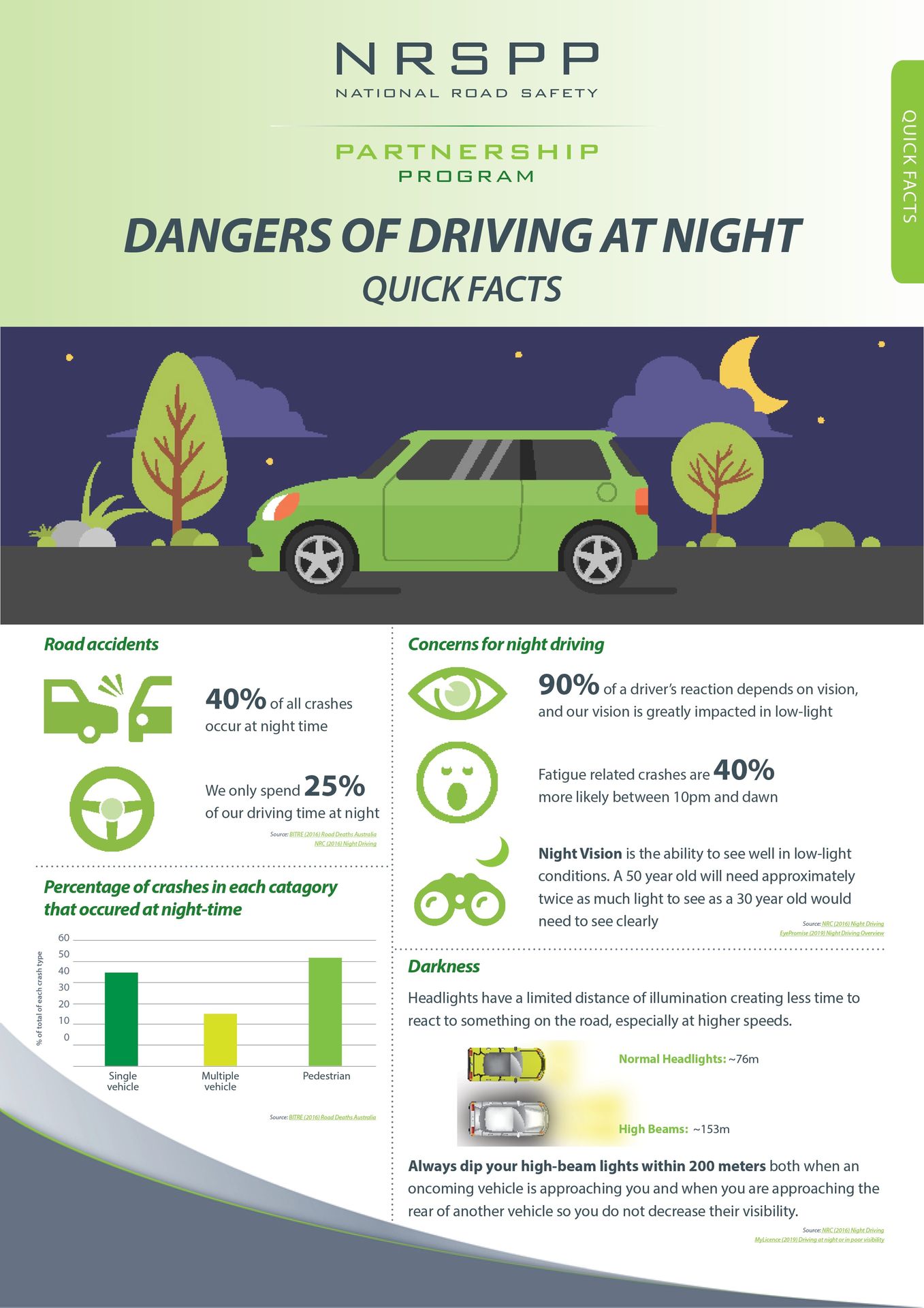What can I do, to reduce risk
At night, vision is severely limited. Drivers lose the advantage of colour and contrast that is available during the day, depth perception and peripheral vision are also diminished.

If you plan on driving after the sun goes down, it's important to remember that driving at night presents different challenges than driving during the day. Traffic death rates are three times greater at night, yet many of us are unaware of the hazards that night driving poses or effective ways to handle them.
At night, vision is severely limited. Drivers lose the advantage of colour and contrast that is available during the day and depth perception and peripheral vision are also diminished.
Use Headlights.
In daytime situations driving with the vehicle headlights on can improve your visibility to other road users. Your lights must be on when;
- Driving between sunset and sunrise.
- At any time when there is not enough daylight to be able to see a person wearing dark clothing at 100 metres.
Using high beam
To see further ahead the use of your headlights high beam is permitted even when there are street lights. You must dip your high beam lights;
- when a vehicle coming towards you is within 200 metres
- when driving 200 metres or less behind another vehicle
- when overtaking another vehicle you may briefly flash high beam immediately before overtaking
Use of driving/fog lights
Front and rear fog lights must only be used in fog or rain or when conditions such as dust or smoke limit your vision.
Vision restrictions at night
- To ensure your vehicle can be seen when parked, leave you parking lights or hazard lights on if necessary.
- Avoiding headlight glare from other vehicles, use of anti glare mirror adjustment.
- Do not allow any light fitted to your vehicle to dazzle another road user
- Avoid looking at the headlights of oncoming vehicles.
- If you are dazzled by glaring lights, look to the left side of the road and drive to the left lane, slow down or pull over until your eyes recover.
- If fitted use anti glare mirror adjustment by tilting the mirror it eliminates head light glare from following vehicles.
Reducing speed when vision is reduced
If vision at night is limited reduce your speed. Use high beam lights to enhance vision if permissible otherwise slow down so that you have a greater chance to react to a hazard.
Learners should practically apply knowledge and skills in a range of contexts and situations. Learners that have been given a log book need to complete 120 hours of driving including 20 hours of night time driving.
Learners need to practically apply headlights and high beam lights in areas of little or no street lighting.
If you have any suggestions or questions let me know and remember practice makes progress!
additional information
NRSPP Quick Fact: Dangers Of Driving At Night

Receive 10% off your first 90 minute driving lesson when you book online. Use the coupon code 10%OFF when booking. I look forward to seeing you soon.
Book now
Driving at night